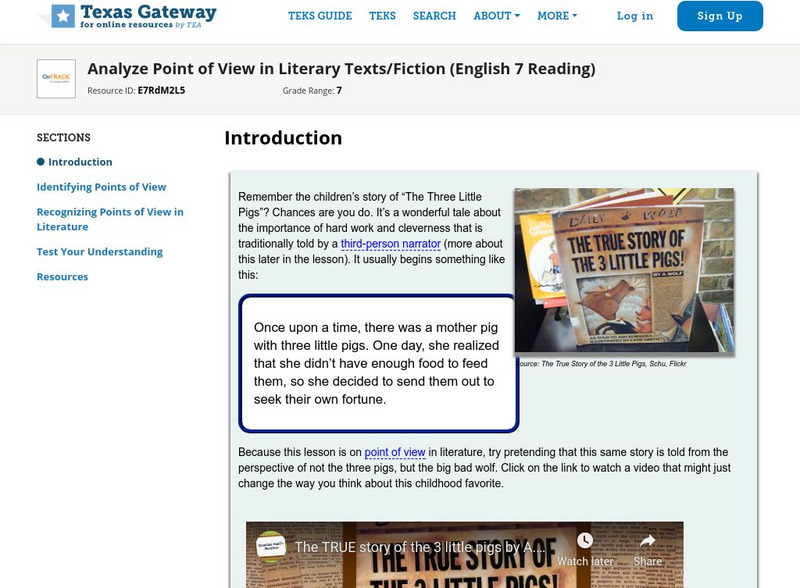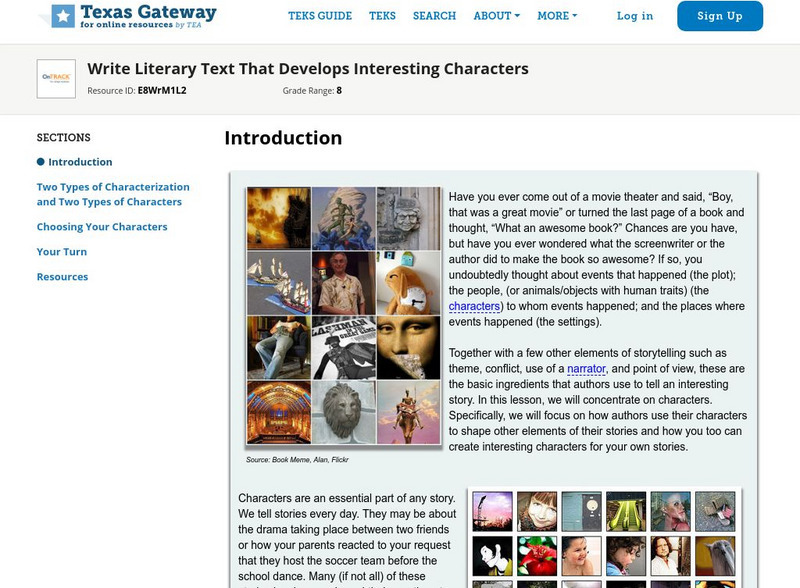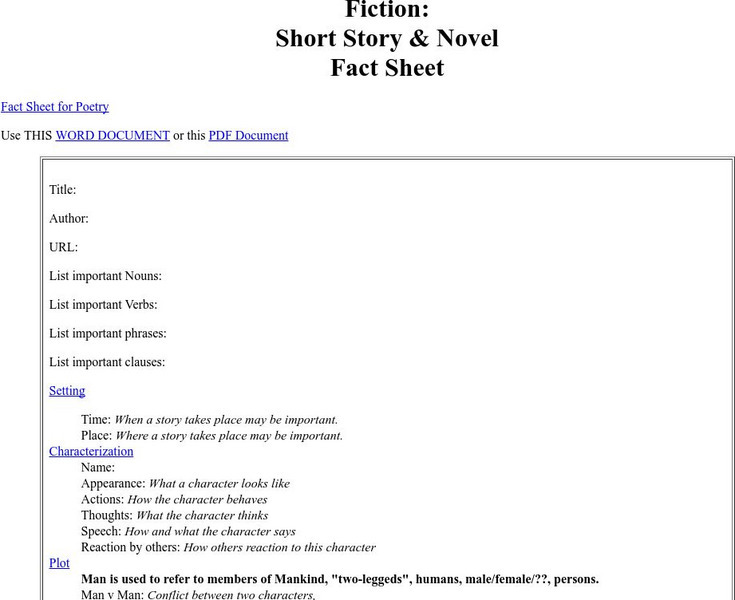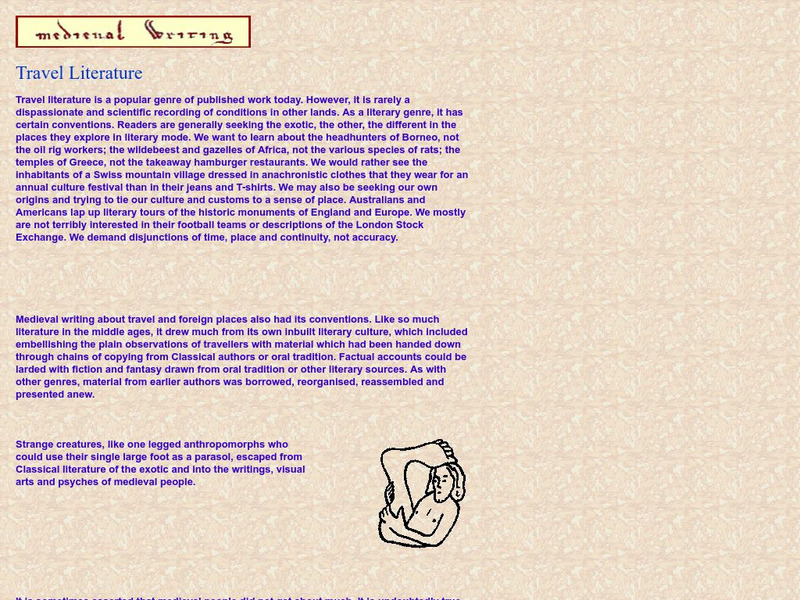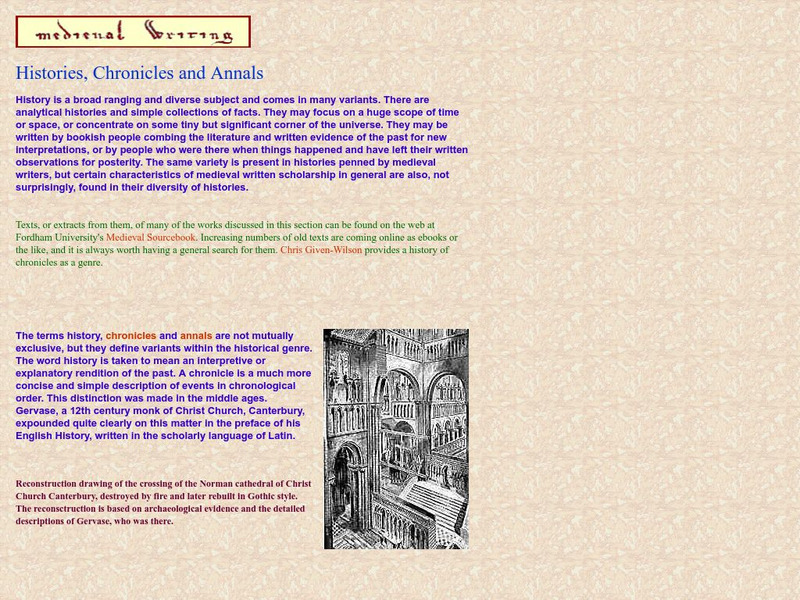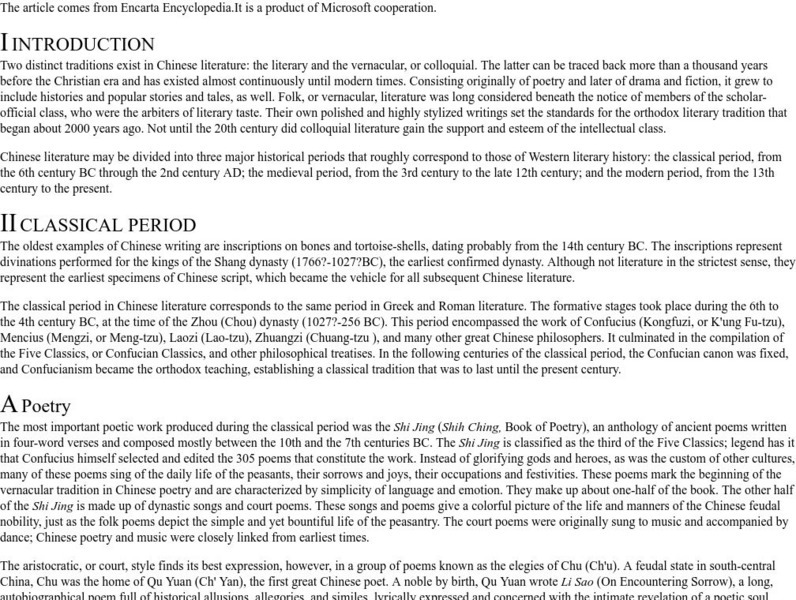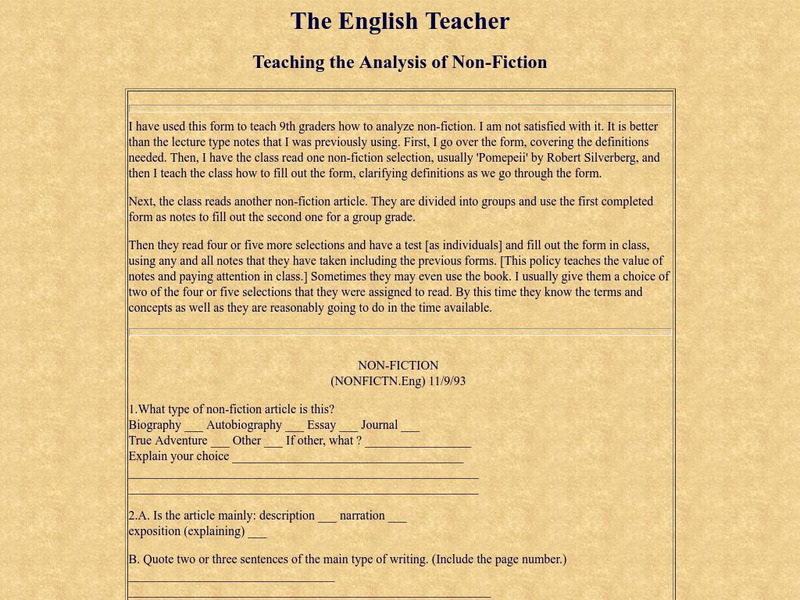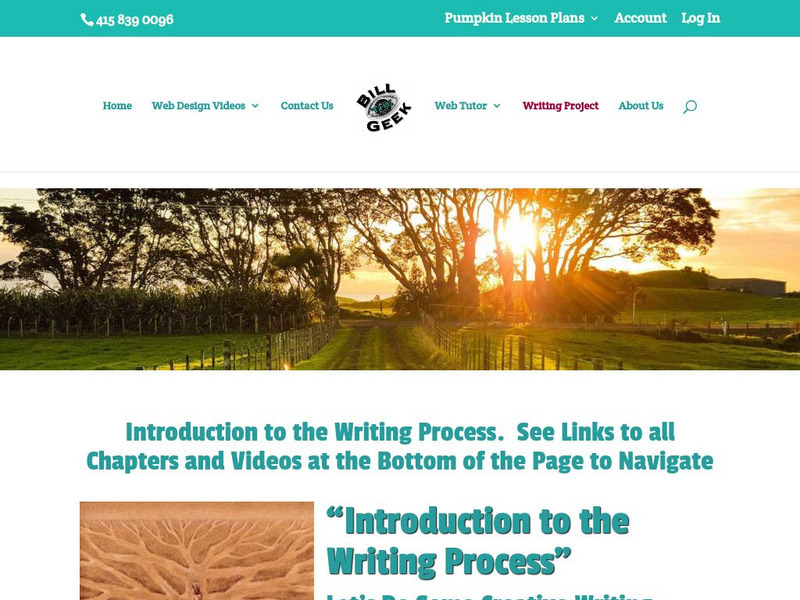Texas Education Agency
Texas Gateway:analyze (Describe) Point of View in Literary Texts/fiction
In this learning module, students will learn to analyze fiction told from the first-person, third-person limited, and third-person omniscient points of view.
Texas Education Agency
Texas Gateway: Analyze Point of View in Literary Texts/fiction
This lesson focuses on identifying points of view and recognizing points of view in literature.
Texas Education Agency
Texas Gateway: Analyze the Central Characters in Literary Text/fiction
In this lesson, students will learn some ways that writers reveal the complexity of their characters. By closely analyzing one author's characters, they will come to see how their words, actions, and interactions with one another can...
Other
Wisewire: Grade 7 Playlist: Historical and Literary Comparisons
Students will learn how to compare and contrast a fictional portrayal of a time, place, or character and a historical account of the same period as a means of understanding how authors of fiction use or alter history. Included are lesson...
Texas Education Agency
Texas Gateway: Compare/contrast Themes and Genres in Literary Texts
Determining the theme is not easy; you have to use the clues the author leaves to figure it out yourself. The author implies information about the story through plot points, setting, and characters. You infer and draw conclusions based...
Texas Education Agency
Texas Gateway: Literary Nonfiction
[Accessible by TX Educators. Free Registration/Login Required] In this lesson, you will learn how to analyze literary nonfiction, especially speeches, by making inferences and drawing conclusions based on evidence in the text. The...
Texas Education Agency
Texas Gateway: Write Literary Text That Develops Interesting Characters
A learning module that teaches students how to write an literary text with good characterization in four lessons: Introduction, Two Types of Characterization and Two Types of Characters, Choosing Your Characters, and Your Turn.
Texas Education Agency
Texas Gateway: Writing Literary Text With an Engaging Story Line
A learning module that teaches students how to write an engaging literary text in six lessons: Introduction, The Narrative Hook, Setting, Conflict, Plot, and Ending.
Houghton Mifflin Harcourt
Holt, Rinehart and Winston: Writer's Model: Autobiographical Narrative Example
This four-page essay provides an example of an autobiographical narrative. Clicking on the "Writer's Guide" link in the upper right-hand corner of the page enables the user to get tips, directions, and explanations on the essay.
Ted Nellen
Cyber English (By Ted Nellen): Fiction: Short Story & Novel Fact Sheet
This is a short story or novel fact sheet offered as a Word document or a PDF. It includes places for title; author; URL; list of important nouns, verbs, phrases, and clauses; setting (includes definition); characterization (including...
Ted Nellen
Cyber English (By Ted Nellen): Characterization
This is a glossary entry for the term "Characterization" including a definition and the characteristics to be developed: Character's appearance, actions, thoughts, voice, and reaction from others.
Writing Fix
Writing Fix: Historical Journal Entries
In this lesson plan, writers will create a detailed journal entry from the point of view of a character who never actually existed. The journal entry will be for a day in history that the writer has researched and found interesting...
Writing Fix
Writing Fix: To Imitate Two Nature Writers
In this lesson each writer will compose and revise a "showing" description inpsired by an object or a place in nature. Long before drafting, students will discuss and compare the writing styles and techniques of published authors who...
Writing Fix
Writing Fix: A Literature Inspired Writing Lesson: A Time Traveler's Log
Students will read chapter four of The Time Machine by H.G. Wells, noting both the time traveler's descriptions of the new world of 800,000 ACE, and the conclusions the main character draws as a 19th century man. Students will think of a...
Smithsonian Institution
Smithsonian Education: Telling Your Story
A lesson in which students gain empathy for people who lived during a historical time period by writing a first-person story with experiences that would have happened during that time.
Curated OER
Mc Graw Hill: Part 1 Reading: Literature: Describe Characters
A reference guide on how to analyze characters in a story.
Other
Personal Site: Travel Literature in the Medieval Period
A nice description of the literary genre known as "travel literature" as it was seen during the Middle Ages in Europe. The author notes that many times, medieval writers would make up exotic creatures to entertain their readers.
Other
Personal Site: Histories, Chronicles and Annals of Medieval Literature
A summary and description of how Medieval writers wrote about history. The author focuses on the use of the "Chronicles" during the Middle Ages in European history.
Other
An Introduction to Chinese Literature
Credited to Encarta, this article has good summary information on the history of Chinese literature. It covers all time periods.
The English Teacher
The English Teacher: Teaching the Analysis of Non Fiction
A form used by an English teacher to help students understand and analyze nonfiction literature. Very helpful ways to classify information. It can be modified for different grade levels.
Other
Bedtime Story: Whimsical Stories for Reading
Awesome site with hundreds of stories by published and unpublished authors to encourage reading stories together and out loud. Each story also has a section titled "What's it all about" which gives background information along with...
Other
Writing Is Exciting!
Students and teachers can use this site to find detailed information on effective and creative story writing.
Other
Drew University: Resources for Writers Comparison Writing
Sections of this site include key features of the comparison essay, comparisons in daily life, formulating a thesis, preparing to write, and organizing a comparison essay. The site also includes a paragraph of caution when writing about...
ReadWriteThink
Read Write Think: Enchanting Readers With Revisionist Fairy Tales
Contains plans for four lessons that ask students to read, compare, and contrast different versions of fairy tales in order to explore age-appropriateness and formats of texts. In addition to objectives and standards, this instructional...



